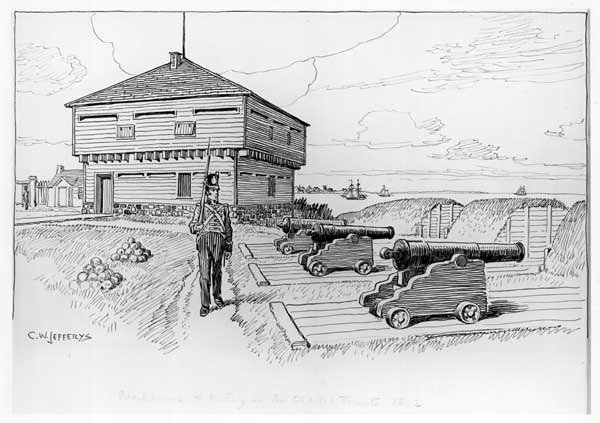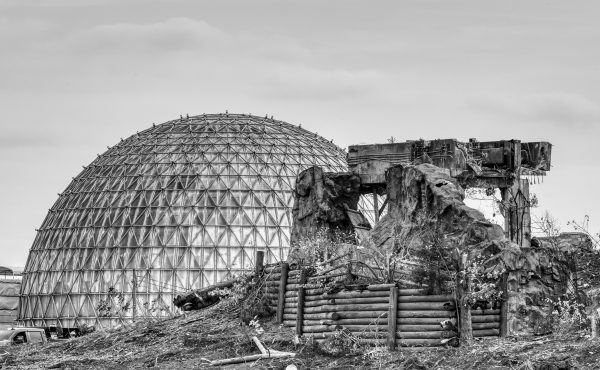
To help mark the War of 1812’s bicentennial year, staff from the Archives of Ontario will be posting a series of articles highlighting their related collections. Their records on the war document battles and battlefields and offer first-person accounts on what life was like during this time. Documentary art and illustrations — samples of which you’ll see in these posts — also show us the landscapes of the day and how much our spaces have changed since then.
When Toronto Was Under Attack
By Chris Sanagan (Archivist, Archives of Ontario)
It’s difficult to imagine Toronto being attacked, plundered and occupied by an invading army. But on the morning of April 27th, 1813, American forces landed just west of the Town of York (as Toronto was then known) and opened fire.
Outnumbered and outgunned, York’s defenders, including an assortment of British soldiers, local militia, and First Nations allies, lost control of Fort York and then the town. Facing annihilation, the British retreated east to Kingston, setting fire to the wooden bridge over the Don River to thwart pursuit. The battle was over and a significant American victory had been won.
The Battle of York was a major engagement of the War of 1812. As the capital of Upper Canada, York was a natural military and political objective of the United States. York itself was physically decimated. Its fortifications had been destroyed during the attack and its parliament buildings, which were Ontario’s first and stood near the corner of modern-day Front and Parliament streets, were burned by invading American troops. Homes were also looted for valuables and provisions, and much of York was set ablaze.
Eyewitness to these events was local farmer and militia officer, Ely Playter, who recorded them in his diary. Surviving in the Archives of Ontario’s collection, the Playter diary reveals the extent of the damage experienced by York and its inhabitants:
“The appearance of the Town & garrison were dismal. The latter shattered and rent by the balls & the explosion of the magazine. Not a building but show some marks of it & some all torn to pieces. The Town thronged with the Yankees, many busy getting off the public stores. The Council office with every window broke & pillaged of every thing that it contained. The Government building, the Block House and the building adjacent all burned to ashes.”
Playter would maintain a diary for the balance of the war and his entries show the actions and motivations of an ordinary man living under extraordinary circumstances. He vividly describes the explosion of Fort York’s ammunition dump, which managed to cause heavy American casualties:
“As I returned out at the Gate, the Magazine blew up & for a few minutes I was in a horrid situation, the stone falling thick as hail & large one’s sinking into the very earth. See Captain Loring a little distance from me fall with his horse. Mr. Sanders also with one leg mashed by a stone. Captain Loring escaped but his horse was killed.”
American forces would eventually depart and York went about the business of rebuilding. Save for a second, smaller invasion in July 1813 that resulted in a raid on the largely unoccupied fort and the obligatory burning of its barracks and storehouses, York saw no more action in the war. But the legacy of the burning and looting of York would prove to have ramifications beyond Upper Canada’s borders. As York’s political counterpart in the United States, it’s believed that in 1814 the British army burned and looted Washington in retaliation for American actions during the Battle of York.
To learn more about the War of 1812 and our related collections, visit our website at ontario.ca/archives. And for more of Ely Playter’s reflections on the war, follow him on Twitter where we’re posting entries from his diary: @ElyPlayter1812.
Image: Blockhouse and Battery in the Old Fort, Toronto, 1812/Jefferys, Charles William (C.W.), work on paper, [ca. 1921], Government of Ontario Art Collection, Accession 621228




One comment
this is a fascinating glimpse into the reality of the attack on our city. it has inspired me to finally learn what the war of 1812 was all about
thank you Mr. Sanagan
Bob Neighbour